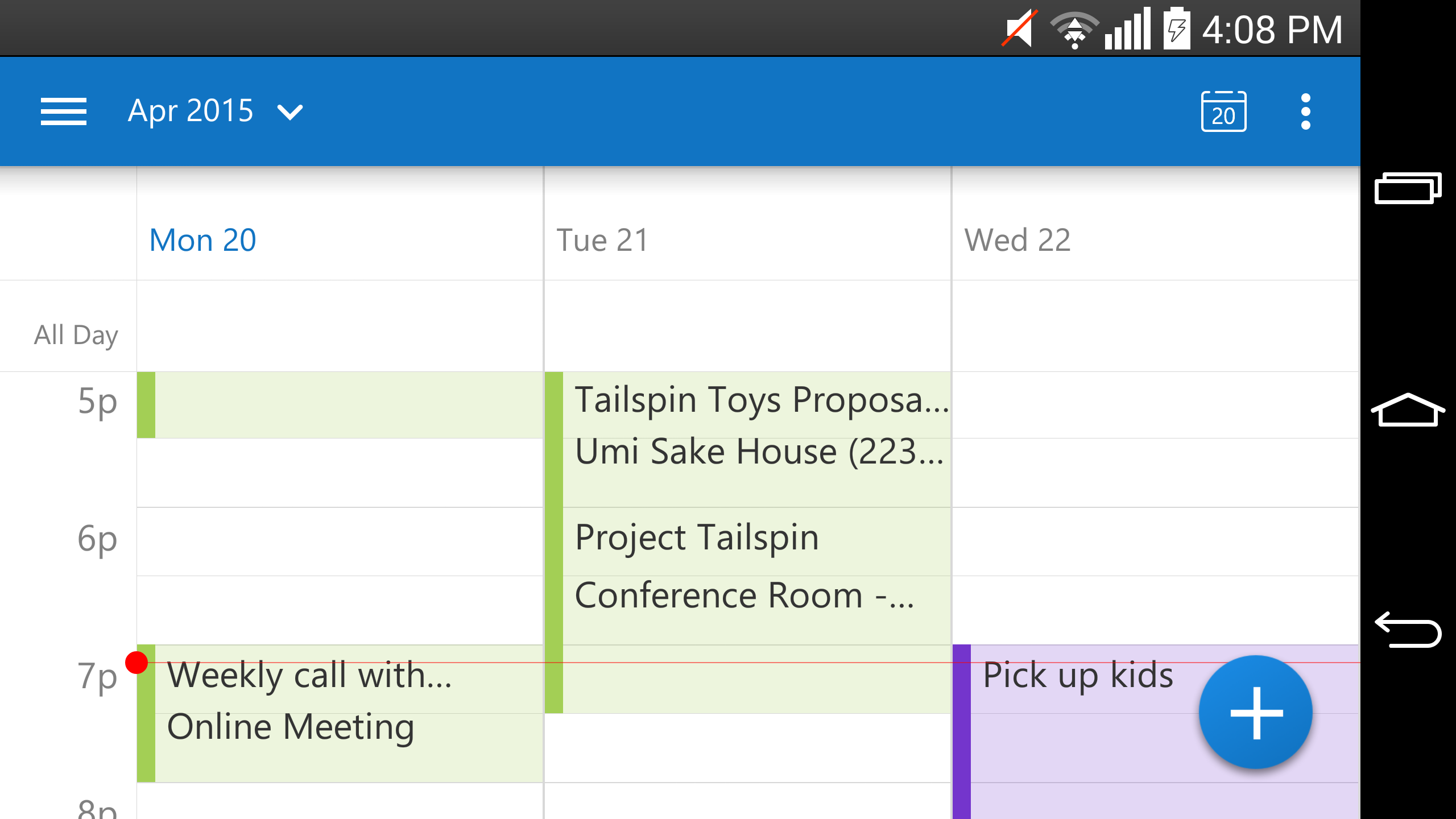Microsoft today launched Outlook for Android, less than three months after debuting the app in preview along with its iOS counterpart. You can download the new app now from Google Play.
Upon launch, Outlook for iOS was naturally ahead of the Android preview version, both in terms of features and performance. Microsoft said today its goal was to match the iOS version, though it stopped short of saying it succeeded.
Since the initial preview release in January, the company has updated Outlook for Android more than once per week (17 times in total). The focus was on improving performance and stability of the app, but Microsoft also worked on localization, accessibility, and “other fit and finish pieces.”
One of the major updates came in February, when the iOS app was also updated. Today, Microsoft rounded up everything all the features it has added to the Android app since its preview debut:
- Improved look and feel: The icon sets have been updated and the fonts have been simplified to match the Outlook experience across operating systems and devices. Common Android design principles like the Navigation Drawer and settings available in the App Overflow menu have also been adopted.
- IMAP support: You can now sync mail from email providers that support IMAP.
- Revised People section: The previous lightweight “top contacts” view has been replaced with a unified view of your contacts from all your email accounts. Selecting a contact lets you view their contact information, launch a new email, start a phone call, or map your way to their location with a single click.
- Directory search: To find contact details for someone in your company or school who’s not saved as a contact, Outlook integrates your full organizational directory (also known as the Global Address List or GAL) in the People section and the email compose experience.
- Three-day view in Calendar: Available in landscape mode, this view is particularly useful on large devices, and is meant to complement the Agenda and Day views to show more of your calendar at once. Support for zero-length meetings, a ‘remove from calendar’ action for cancelled meetings, and an improved calendar day picker when creating and editing meetings were also added.
- Customize swipe gestures: Swipe right or left to take actions like archive, delete, move, flag, mark as read/unread, or schedule. You can also personalize these swipe gestures to match your unique email habits.
- Change folders for swipe gestures: You can choose and change your default folders for the Archive and Schedule swipe gestures by going to Settings > Choose an account > Advanced Settings > System Folders.
- Empty trash/deleted items folders: You can now permanently delete items from your deleted items folder.
While Outlook for Android is available in all markets supported by the Google Play Store, its interface is currently translated into 30 languages. These are as follows: English, Norwegian (Bokmål), Catalan, Croatian, Czech, Danish, Dutch, Finnish, French, German, Greek, Hungarian, Indonesian, Italian, Japanese, Korean, Malay, Polish, Portuguese, Romanian, Russian, Simplified Chinese, Slovak, Spanish, Swedish, Thai, Traditional Chinese, Turkish, Ukrainian, and Vietnamese.
Microsoft today declared, “Outlook is an example of Office’s new development model for building mobile apps — deliver a great first version of our apps and then iterate quickly with the help and feedback of our users.” In other words, this is just the beginning.
More specifically, the Outlook team said today’s out-of-preview launch is not “a statement that we are ‘done’.” Android users can expect improvements and new features “every few weeks.”
VentureBeat's mission is to be a digital town square for technical decision-makers to gain knowledge about transformative enterprise technology and transact. Learn More



